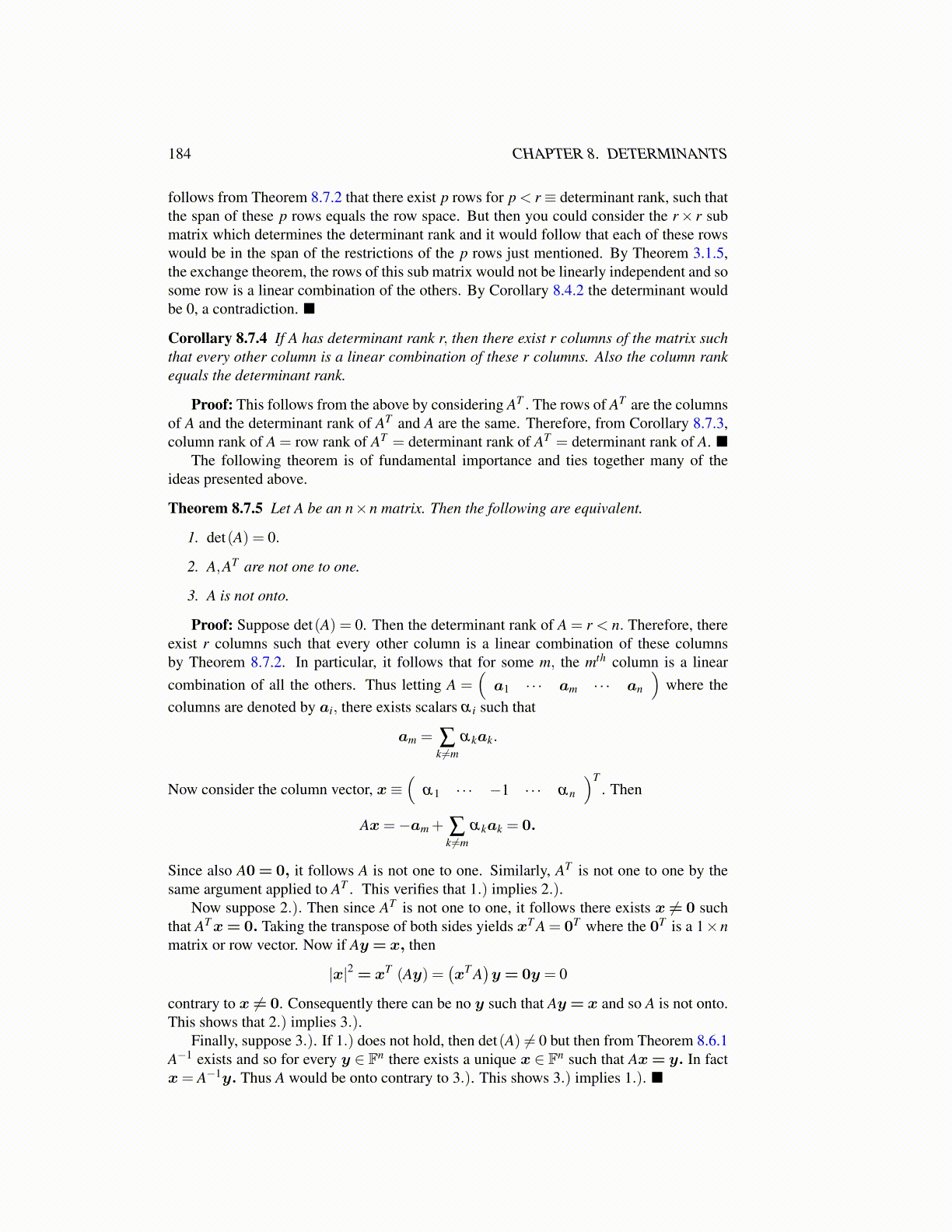
184 CHAPTER 8. DETERMINANTS
follows from Theorem 8.7.2 that there exist p rows for p < r≡ determinant rank, such thatthe span of these p rows equals the row space. But then you could consider the r× r submatrix which determines the determinant rank and it would follow that each of these rowswould be in the span of the restrictions of the p rows just mentioned. By Theorem 3.1.5,the exchange theorem, the rows of this sub matrix would not be linearly independent and sosome row is a linear combination of the others. By Corollary 8.4.2 the determinant wouldbe 0, a contradiction. ■
Corollary 8.7.4 If A has determinant rank r, then there exist r columns of the matrix suchthat every other column is a linear combination of these r columns. Also the column rankequals the determinant rank.
Proof: This follows from the above by considering AT . The rows of AT are the columnsof A and the determinant rank of AT and A are the same. Therefore, from Corollary 8.7.3,column rank of A = row rank of AT = determinant rank of AT = determinant rank of A. ■
The following theorem is of fundamental importance and ties together many of theideas presented above.
Theorem 8.7.5 Let A be an n×n matrix. Then the following are equivalent.
1. det(A) = 0.
2. A,AT are not one to one.
3. A is not onto.
Proof: Suppose det(A) = 0. Then the determinant rank of A = r < n. Therefore, thereexist r columns such that every other column is a linear combination of these columnsby Theorem 8.7.2. In particular, it follows that for some m, the mth column is a linearcombination of all the others. Thus letting A =
(a1 · · · am · · · an
)where the
columns are denoted by ai, there exists scalars α i such that
am = ∑k ̸=m
αkak.
Now consider the column vector, x≡(
α1 · · · −1 · · · αn
)T. Then
Ax=−am + ∑k ̸=m
αkak = 0.
Since also A0 = 0, it follows A is not one to one. Similarly, AT is not one to one by thesame argument applied to AT . This verifies that 1.) implies 2.).
Now suppose 2.). Then since AT is not one to one, it follows there exists x ̸= 0 suchthat ATx= 0. Taking the transpose of both sides yields xT A = 0T where the 0T is a 1×nmatrix or row vector. Now if Ay = x, then
|x|2 = xT (Ay) =(xT A
)y = 0y = 0
contrary to x ̸= 0. Consequently there can be no y such that Ay = x and so A is not onto.This shows that 2.) implies 3.).
Finally, suppose 3.). If 1.) does not hold, then det(A) ̸= 0 but then from Theorem 8.6.1A−1 exists and so for every y ∈ Fn there exists a unique x ∈ Fn such that Ax= y. In factx= A−1y. Thus A would be onto contrary to 3.). This shows 3.) implies 1.). ■